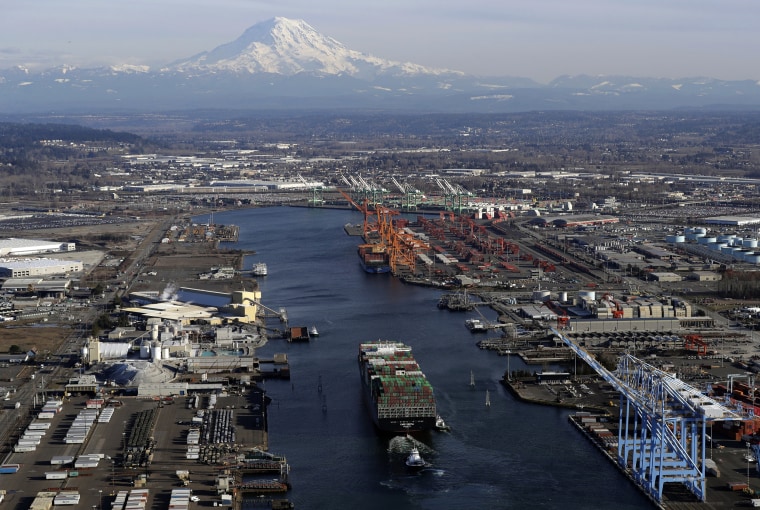President Donald Trump said his "Tariffs on China" were boosting the American economy. Some economists, however, aren't so willing to connect those dots, pointing out the negative effects the tariffs are having on the country's economic growth.
"The unexpectedly good first quarter 3.2% GDP was greatly helped by Tariffs from China. Some people just don’t get it!" Trump tweeted on Monday.
While lowered imports do increase gross domestic product, one quarter does not make a streak — and the rise in the gross domestic product did not come from the factors you might want.
GDP based on spending is the sum of what consumers spend, what businesses spend, the amount the government spends, and exports minus imports. If exports increase or imports decrease — as with China — GDP goes up.
Tariffs increased the price of goods from China and so drove down demand as you might expect, lowering imports. But that is only one factor, and not necessarily a steady one. First thing to remember is that these are first estimates, according to Usha Haley, a professor of management and director of the Center for International Business Advancement at Wichita State University.
The export increase was largely of natural gas and [metallurgical] coal, according to Haley. "And all this is to China," she said. They use gas to generate power, and metallurgical coal — a particularly high grade — to make steel. If China turns to other sources, that could lower the positive trade impact over time.
The tariffs are certainly having other costs on the economy. Clients of strategic and operational consulting firm IHS Markit have been frustrated with the time they're spending on trying to get around the extra costs tariffs present, according to Joel Prakken, the company's chief U.S. economist. "One big company said its management team was spending half its time trying to readjust the supply chain," Prakken said. "That was time they used to spend trying to figure out how to make the company grow."
Then there are the other economic factors to consider. "A big part of the problem is that Trump doesn't seem to understand how trade works and how tariffs work," said Scott Brown, chief economist of Raymond James. Tariffs are a tax because they're paid by the importer. U.S. tariffs on Chinese imports are paid by Americans. "They raise costs and invite retaliation," he said.
There are also many other factors that contribute to how GDP looks. One is inventories of companies, which rose in the third quarter of 2018 and the first quarter of this year. A likely, although not certain, explanation is that companies decided to import products and materials ahead of the announced tariffs to save money. It could also be that companies were optimistic. "We're anticipating they're going to slow down at some point, which will be a negative to GDP," Brown said.
Many economists focus on certain portions of GDP that they consider more telling. "I always like to look at final private domestic purchases, which you can think of as GDP less government, inventories, and foreign trade," Brown said. "And it was software in the first quarter." Instead of growing at the 3.2 percent overall rate, private domestic purchases were up only 1.3 percent.
"It's a red flag," Brown said. One that could wind up delivering a powerful economic injury instead of a temporary bragging point.
